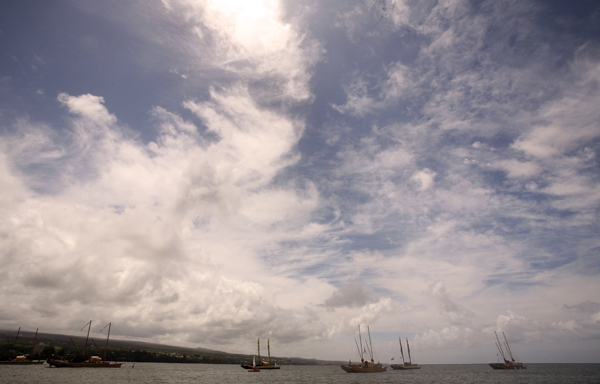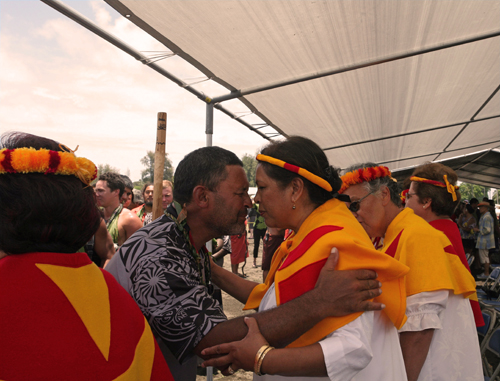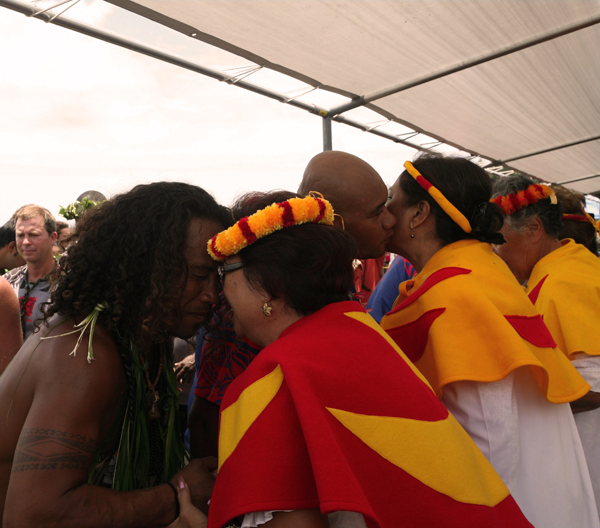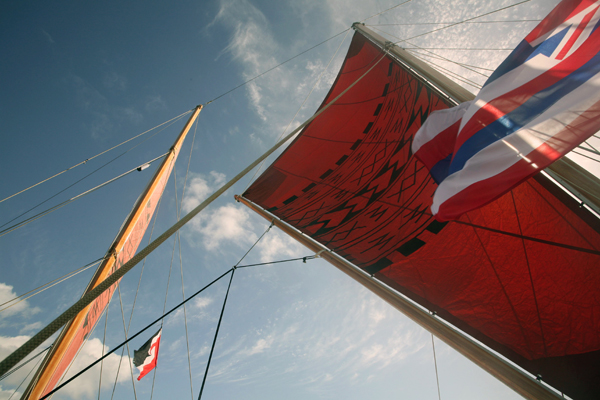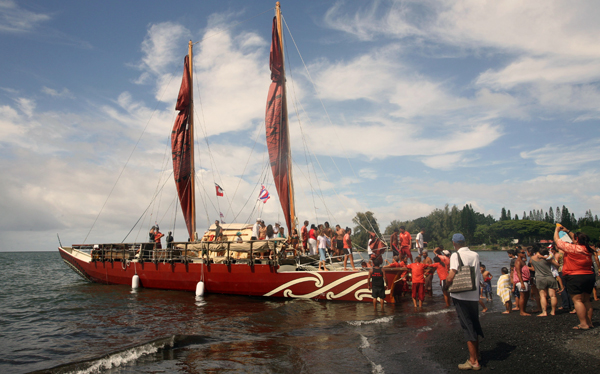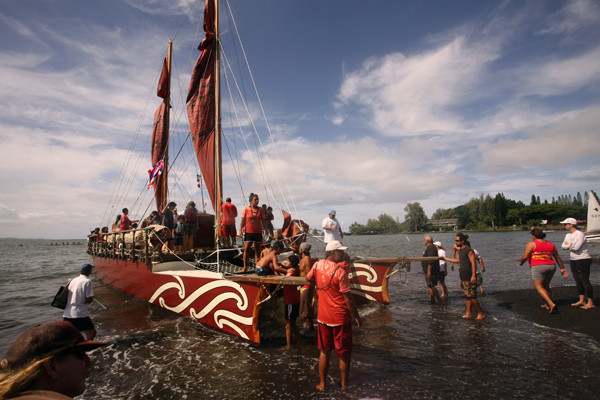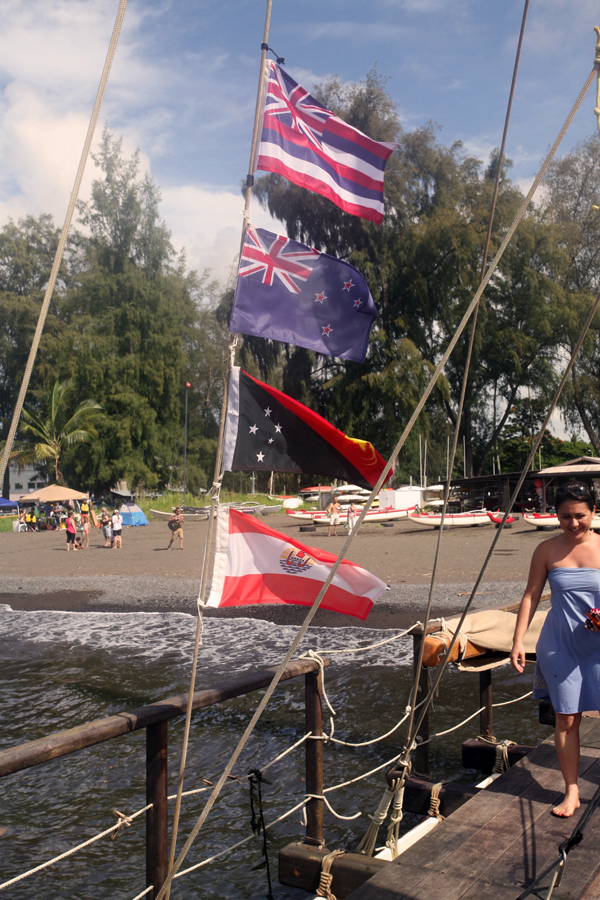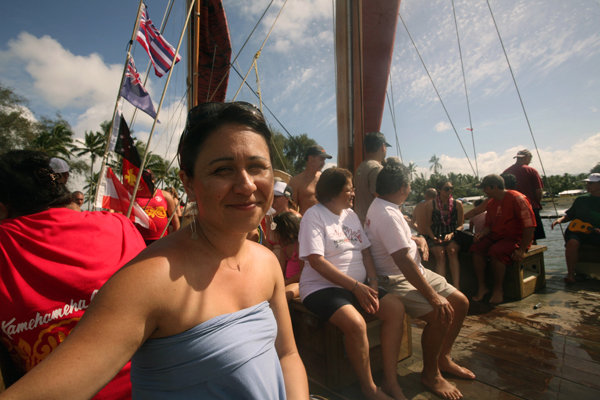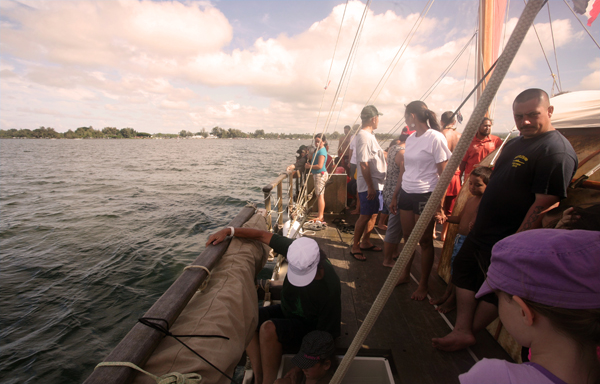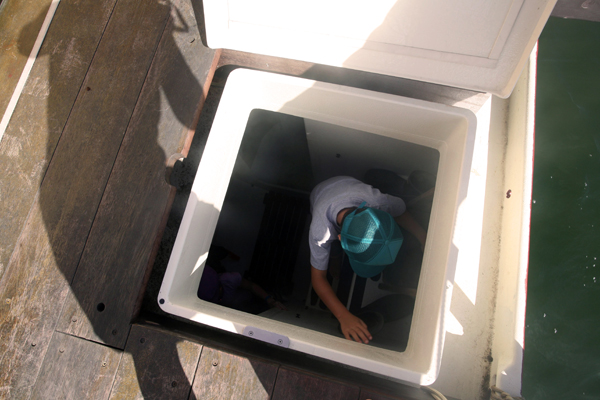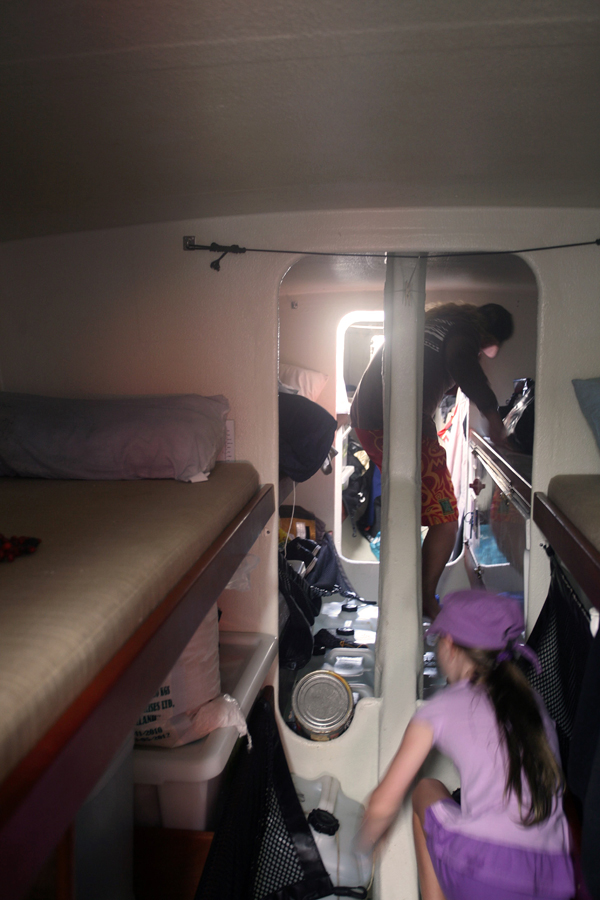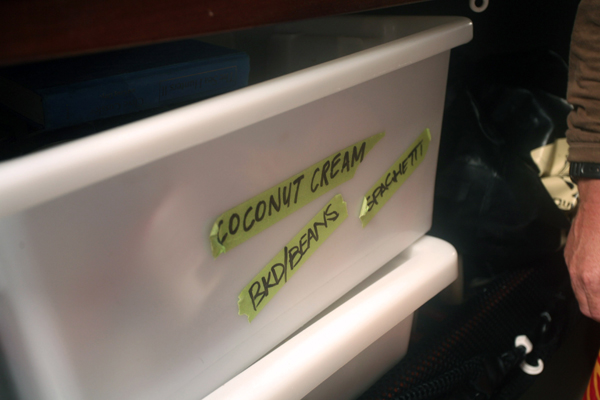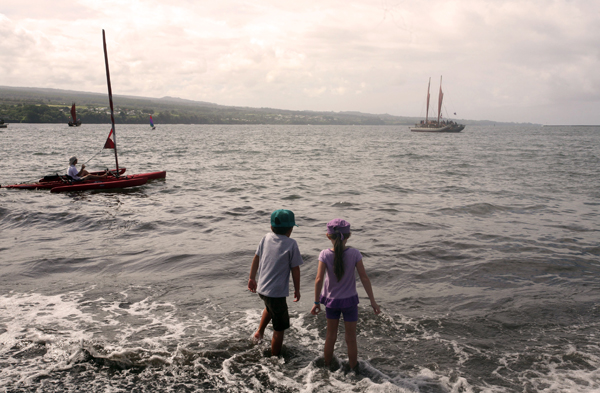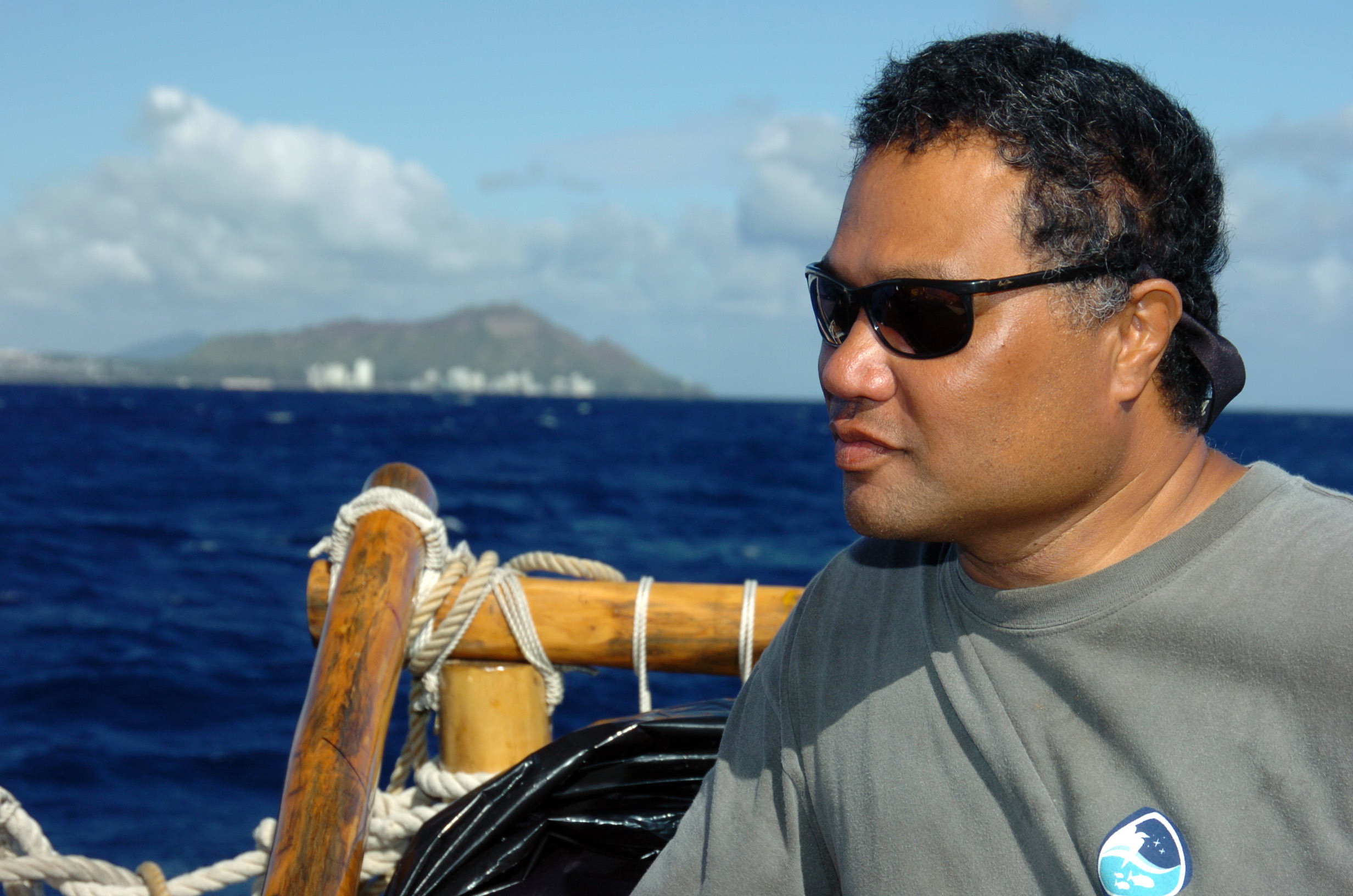Richard Ha writes:
The Polynesian voyaging canoes Hokule‘a and Hikianalia departed Hilo a couple days ago, headed for Tahiti on the first leg of an around-the-world voyage. Kalepa Babayan is captain of the Hokule‘a, and he melds ancient ways with modern technology and education. He is one of the most solidly grounded person I know.
Hokule‘a crew member Na‘alehu Anthony blogged about leaving Hilo in It Takes a Community to Launch a Canoe:
Literally thousands of members of our ʻohana waʻa (canoe family) have come to see the canoes. School groups by the busloads have come to share mele (songs) and hoʻokupu (offerings) to the canoes and crew. But if one looks a little closer, they can start to really notice how well this community still understands the sense of aloha. Every day for the past 10 days this community has come out to feed the crew three meals a day. Cars have been dropped off to help with last minute runs to the store. People have come without any expectation of personal gain to give of their time to just help us prepare for this 47,000 mile journey. Just this morning after sunrise, one of the uncles from nearby came to drop off a dozen or so lei, that he personally strung together with flowers from his yard, just to “Aloha” the canoes. He didn’t even ask to come aboard, rather, he left them in the care of one of our watch captains to bless the canoes with the sweet fragrance that reminds us all of Hilo.
We did our small part by supplying bananas and tomatoes, and feel very privileged to be able to support Hawai‘i's voyagers, along with hundreds of others. We learned, early on, that the voyaging crews like fresh fruit, especially longer into the trip, so we do this as much as we can on the voyages out of Hilo. We do our best to stage the ripening at different times, and try to see how far into the voyage we can get the bananas to last. We once got a batch to last until the crew reached the equator.
Keaukaha was the host community for the wa‘a and their crews, and its president, Patrick Kahawaiola'a, was in charge of coordinating. June and I went to Palekai to see the canoes the other day.
As we walked down to the water, we ran into Bruce Blankenfeld, the captain of Hikianalia. I knew he had lots on his mind, so I introduced myself by saying we had supplied bananas on previous trips, and that they should "try keep the bananas separated so they no all go off at one time." He knew exactly what I meant. I gave him the thumbs up and we kept on going.
To me, the voyage of the Hokule‘a and the Hikianalia represents hope for mankind. It is about the spirit of aloha. It is about using the resources available, modern and ancient, in a smart way. But mostly it's about attitude. There are a thousand reasons why no can. We need just one reason why, CAN.
From www.hokulea.com:
Island Wisdom, Ocean Connections, Global Lessons
Hōkūle‘a and Hikianalia, our Polynesian voyaging canoes, are sailing across Earth’s oceans to join and grow the global movement toward a more sustainable world. Covering 47,000 nautical miles, 85 ports, and 26 countries, the Mālama Honua Worldwide Voyage will highlight diverse cultural and natural treasures and the importance of working together to protect them. The Mālama Honua Worldwide Voyage began in 2013 with a Mālama Hawaiʻi sail around our archipelago, and will continue through 2017 when our new generation of navigators take the helm and guide Hōkūle‘a and Hikianalia back to Polynesia after circumnavigating the globe.
The Hawaiian name for this voyage, Mālama Honua, means “to care for our Earth.” Living on an island chain teaches us that our natural world is a gift with limits and that we must carefully steward this gift if we are to survive together. As we work to protect cultural and environmental resources for our children’s future, our Pacific voyaging traditions teach us to venture beyond the horizon to connect and learn with others. The Worldwide Voyage is a means by which we now engage all of Island Earth—practicing how to live sustainably, while sharing, learning, creating global relationships, and discovering the wonders of this precious place we all call home.

